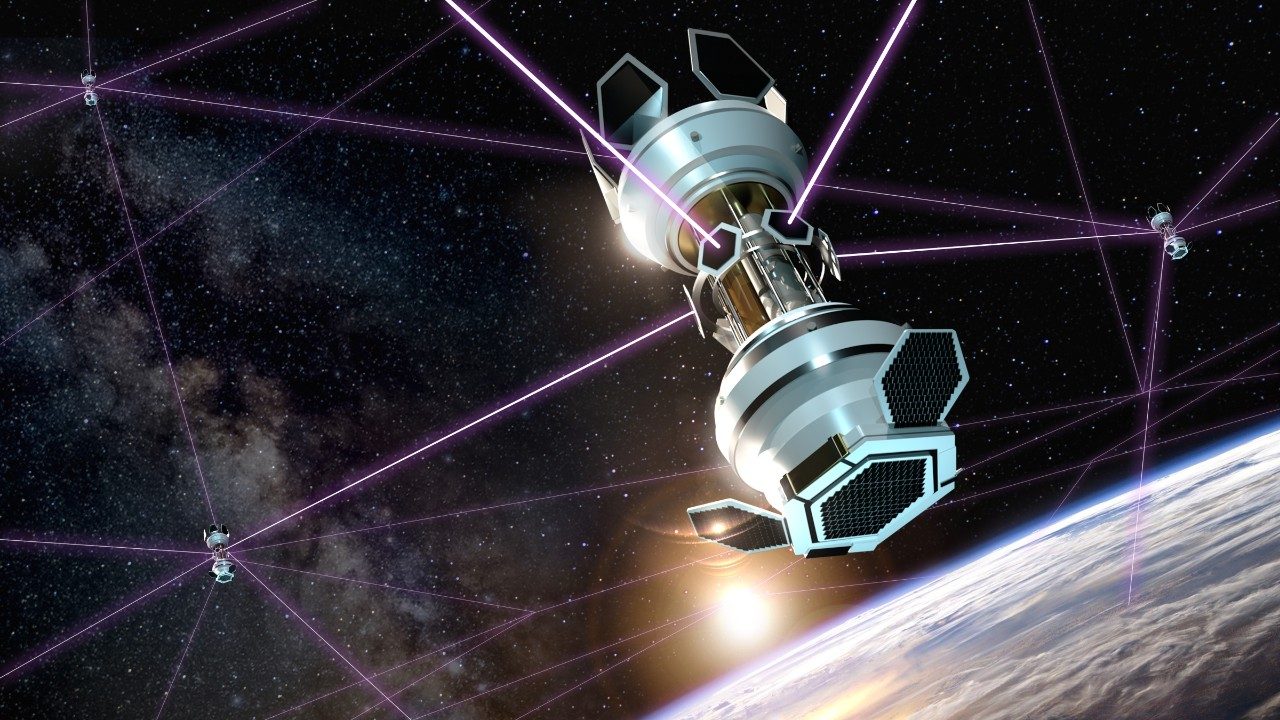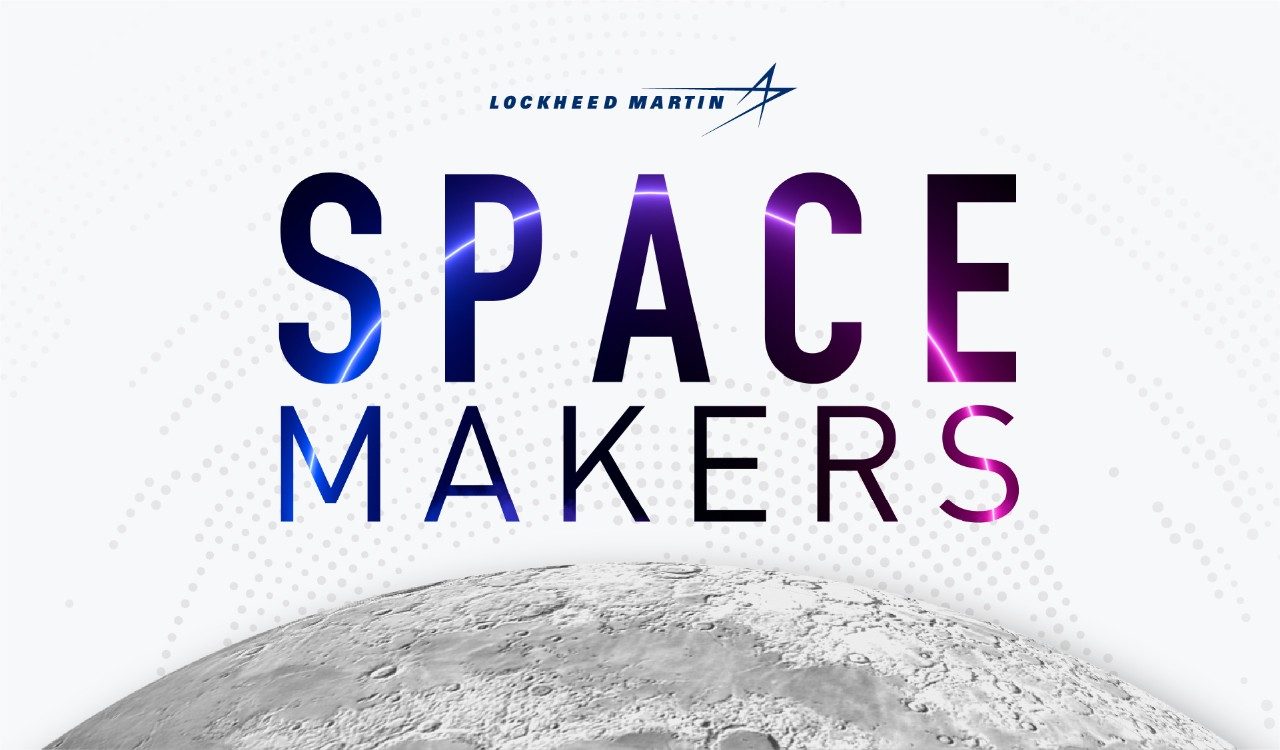Leveraging a legacy of vision and innovation, Lockheed Martin is pioneering what space looks like in the next 100 years.
The Next Mission
Opportunities to revolutionize space exploration and development are not only unlimited for Lockheed Martin, says Dr. Steve Gerali, Lockheed Martin’s Chief Architect for the Business Innovation, Transformation and Enterprise Excellence (BITEE) organization, they are already quickly becoming reality.
From building the first space economy by furthering robotic and human exploration, to connecting battlespaces with reliable space-based communications networks, pioneering capabilities being developed right now at Lockheed Martin Space are transforming all aspects of space exploration and development.
But, says Steve, there is much to be done.
“We have to get to the point where all of our products talk between one another. So our F-35 communicates with our satellites which communicates with our Aegis, with our mission solutions groups so that you get a common command and control picture that brings all the capabilities we have into a single integrated operating picture,” Steve says. “The more that we can work on allowing our products to communicate and work together, the more powerful those products become.”
Experience moves the needle, but so will innovative business practices.
“We can do more with venture capital, innovation garages and research and development labs, similar to what we've done in previous histories with Skunkworks,” Steve says. “We can take that legacy that Lockheed Martin has built in the past 100 years and leverage it to keep innovating for the next 100 years.”
Connecting Capabilities
The totally connected world here on Earth and in space which Steve envisions starts with shared systems architectures.
“We’re answering, ‘How do we operate more as one company and bring all the capabilities we have together and then deliver them to our customers?’”
That means building a space digital reference architecture that connects the corporation, from factory to human resources. “We can define, develop and collaborate on those key reference architectures together as we build out our transformation initiatives. It’s all about creating reusable reference architectures that people can deploy quickly to bring on these new services.”
The connectivity extends to the Industrial Internet of Things (ELIOT). “How do we enable insight into our factories to improve the utility to ensure that the equipment is maintained properly, to make sure that the quality of what we're building out is there to meet the mission requirements for the customer,” Steve says.
Factories that once operated in silos have their equipment connected to a network. “With the Intelligent Factory, we are bringing those sets of equipment online, connecting it and doing it in a secure manner.”
Using Data to Deliver Mission Goals
On the Big Data side, Steve says, “it’s all about how we store high rates of data to enable analytics downstream to make sure our products are operating effectively and delivering the mission goals.”
For instance, an artificial intelligence (AI) program on a military satellite can learn to identify physical features like roads and aircraft, but how do you process the data it creates back on the ground to minimize threat response time? “We want to run those AI and machine learning algorithms on the satellite itself, versus having to push all the data to the ground system, run the analytics at the ground, and then eventually get the answer,” Steve says. “If you can do it in flight, the kill chain is as small as possible.”
In the future, “these applications will do the processing in flight, so that we do not have to send as much data to the ground.” The same efficiencies apply in analyzing data from commercial and civil spacecraft such as analyzing telemetry anomalies – or even in monitoring machines in intelligent factories. “Rather than having a human watch the machine, we can actually have the computer watch the machine for us,” Steve explains. “It changes the way we deliver results to our customers.”
.jpg.pc-adaptive.full.medium.jpg)
Model-Based Engineering Builds Mission Success
More and more, customers are asking to “see how the sausage gets made,” Steve says. Meeting those requests requires another tool – one that he’s probably most excited about – model-based engineering.
“They want to know how we model the set of system requirements they gave us into a design. How do we validate it's going to meet performance characteristics?”
Model-based engineering changes the way customers experience the product, giving them a preview of the finished design and how it will meet their mission needs.
“The customer can come in and see models of any of the products that we build,” Steve says. “They can see the simulation in the computer before we create the finished product so that they feel comfortable with the approach.”
Lockheed Martin Space’s model-based engineering acceleration program brings together 65-plus engineering tools, from Cameo Systems Modeler software to CAD drawings to manufacturing work instructions.
Steve believes model-based engineering is the most exciting innovation impacting the future of space. It’s important not only for customers to see the end product but also for the suppliers, who account for 70% of the cost of spacecraft, either building sub-assemblies or providing components, to see how their work impacts the final product.
Bringing all those parties together is the challenge he is working on for the future – one in which “everyone is working rapidly to enable, because model-based engineering will become the de facto standard by which future business with the government is held.”
Retooling and Reskilling
Propelling these initiatives requires talent – lots of it. Reskilling today’s workers and in the years ahead, in anticipation of the new jobs they will have to tackle.
A Dell Technologies report predicts 85% of the jobs that will exist in 2030 haven’t even been invented yet. Many are linked to artificial intelligence and machine learning, augmented reality, virtual reality, cloud computing, and human-machine partnerships.
The STEM connection isn’t lost on Steve. As a Lockheed Martin Fellow, he sees it as his role to inspire, train and recruit the next generation of technical talent.
To further that mission, he works with students from elementary school LEGO leagues to university-level capstone projects focused on supply chain risk analysis, encouraging them to pursue STEM careers.
“As we move out into space itself and create that pathway for the future, new jobs are going to open up,” Steve says. “We’ll be doing 3D printing, using materials from the Moon or asteroids, to build things in space. We’re going to need large numbers of communications satellites, power stations, and ways to take folks to space and back. If you’re interested in solving the problems of today and tomorrow, there’s always going to be a job for you.”
More From Our LM Space Thought Leaders
Mastering the Connected Battlespace
Keeping the individual warfighter at the center of digital technology development
Listen to the Podcast
Get an inside look into some of the most challenging and innovative missions
Blurring the Karman Line
See how we're bringing transformative digital technologies to the business of space






